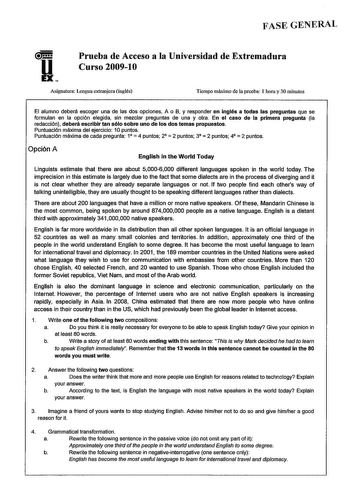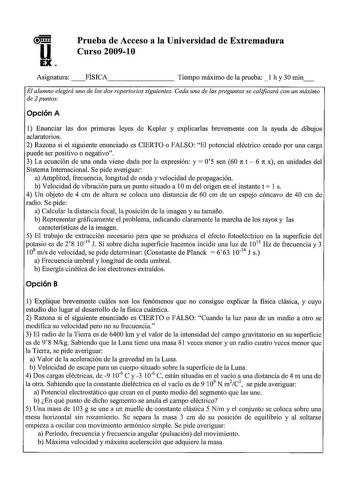Examen de Inglés de Extremadura (PAU de 2010)

| Comunidad Autónoma | Extremadura |
|---|---|
| Asignatura | Inglés |
| Convocatoria | Extraordinaria de 2010 |
| Fase | General |
Temas mencionados new_releases

Cretaceous–Paleogene extinction event
The Cretaceous–Paleogene (K–Pg) extinction event, also known as the Cretaceous–Tertiary (K–T) extinction, was a mass extinction of some three-quarters of the plant and animal species on Earth that occurred over a geologically short period of time approximately 66 million years ago. With the exception of some ectothermic species like the leatherback sea turtle and crocodiles, no tetrapods weighing more than survived. It marked the end of the Cretaceous period and with it, the entire Mesozoic Era, opening the Cenozoic Era that continues today.
Fuente: wikipedia.orgWFTH
WFTH is a Public Radio formatted broadcast radio station licensed to and serving Richmond, Virginia. WFTH is owned and operated by Stu-Comm, Inc. WFTH rebroadcasts the signal of sister station WNRN full time.
Fuente: wikipedia.org
Cambrian explosion
The Cambrian explosion or Cambrian radiation was the relatively short evolutionary event, beginning around in the Cambrian period, during which most major animal phyla appeared, as indicated by the fossil record. Lasting for about the next 20–25 million years, it resulted in the divergence of most modern metazoan phyla. Additionally, the event was accompanied by major diversification of other organisms. Prior to the Cambrian explosion, most organisms were simple, composed of individual cells occasionally organized into colonies. Over the following 70 to 80 million years, the rate of diversific…
Fuente: wikipedia.org


